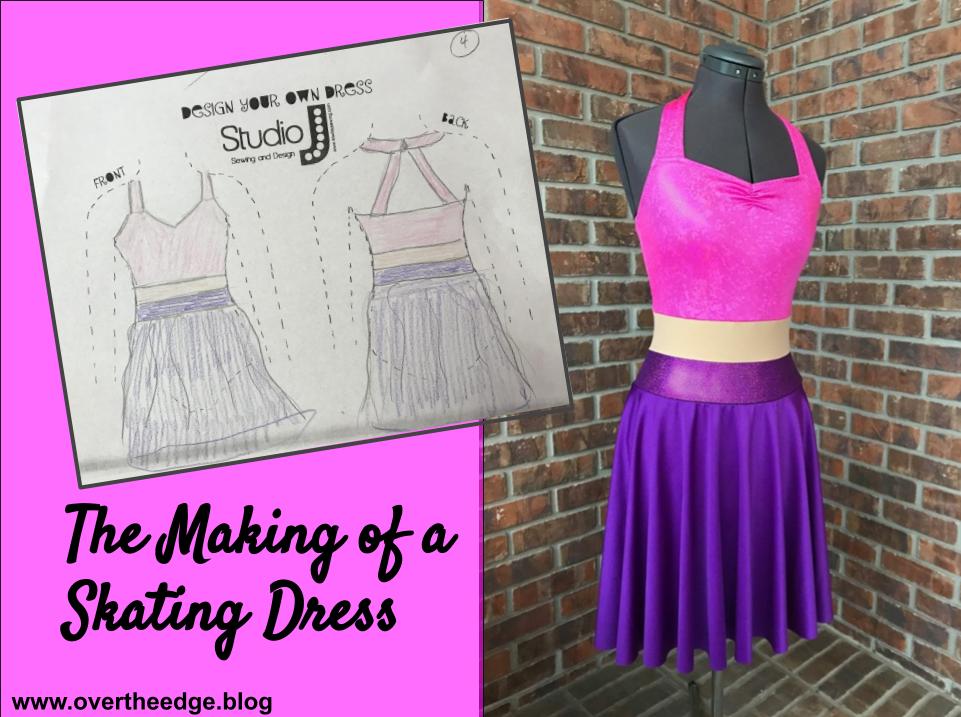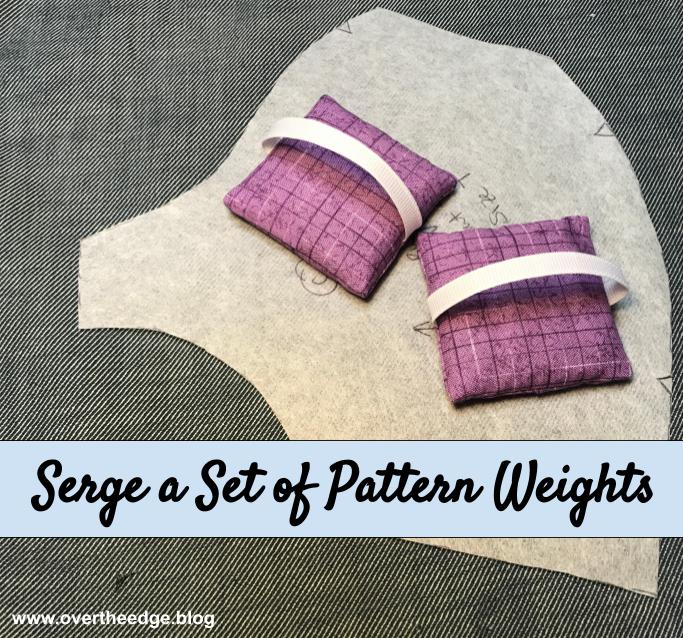The Making of a Skating Dress

I was inspired to blog about the making of a skating dress, because this is the time of year I am typically crazy busy making costumes for color guards and figure skaters. But not this year. Because of the pandemic most of these activities were cancelled or down-sized. The good news is that I will have more time to invest in my blog. But I still am going to miss the creative process of designing costumes for these performers. I might not be sewing them this year, but I can reminisce and share some of my creations with you. So today my blog post is all about The Making of a Skating Dress.
I started designing and sewing figure skating dresses when my daughters were skating many years ago. My serger was the perfect tool to use to create these costumes. I taught myself through trial and error, like most designers of figure skating fashion. After my daughters transitioned to color guard, I started designing and sewing color guard uniforms. My girls no longer skate or guard, but I am still designing and sewing costumes for others! I enjoy working with all of the pretty fabrics and embellishments.
The Making of a Skating Dress from Start to Finish
I didn’t photograph the steps of the creation process for many of my costumes, but I did happen to take enough photos of one of my dress designs to be able to feature it in this blog post. This dress was designed for a collegiate synchronized figure skating team.
Here is the process I follow to create a custom costume. Typically I need 6-8 weeks of time (minimum) from meeting with the coaches to delivering a set of costumes. It really depends on the complexity of the costume and the number of performers. I do all the designing and sewing myself. Sometimes my hubby will help me with some cutting or hand sewing.
Initial Discussion of Ideas, Budget and Timeline
The first step is to talk with the coaches/performers about the design they are envisioning and get their input about fabric and colors. We also discuss their budget and timeline. If they have made sketches or collected photos of what they are looking for, I also ask for copies of those.
The inspiration for this dress came from a dress worn by Meryl Davis, an olympic gold medalist in ice dancing (photo below). They wanted the skirt to be longer and full and to dip in the back. They also wanted to add straps to hold up the bodice. The colors they chose were bright pink and purple.
Fabric Swatches
Based on our initial discussion, I typically order several different fabric swatches. Because they have a huge selection I order most of my spandex from spandexworld.com. The decisions on actual fabrics to be used are not made until after we’ve had a chance to touch and feel the fabric swatches. Fabrics can appear quite differently from how they appear on your computer screen.
For this dress, we decided on a holographic pink bodice, a holographic purple belt and a sparkle purple spandex. What appears to be a bare midriff is really a stretch mesh with stretch lining underneath.
Meet, Determine and Measure
Once I receive the fabric swatches, I meet with the coaches/skaters. At this meeting we choose the actual fabrics to be used in the costume, and make final decisions about the dress design. I also take measurements of all of the performers. For teams, in addition to measurements, I have all of the performers try on my “fit samples”. These fit samples help skaters to determine the size they are most comfortable in. I use their preferences along with the measurements to determine which size costume to make for each performer.
Sketch
After gathering all of the data, I make a simple sketch of desired design and get approval from the coaches.
Estimates and Ordering
After the sketch is approved, I determine the amount of fabric to be ordered and provide an estimate for the project to the coaches/performers. Once the estimate has been approved and I have received the down payment, I order the fabrics and notions.
Prototype
While I am waiting for the fabric to arrive, I make the prototype pattern and then the prototype dress from similar fabrics.The prototype is usually made in my size so I can put it on and evaluate the fit and design. Sometimes I use a commercial pattern as a base for the design, especially when I first began making skating dresses. But now I mostly work from a standard sloper I have created, which I modify for each design. If you are looking for some patterns to make skating dresses, Jalie has quite a few. Kwik Sew also has a few. There are also some independent pattern companies, such as Specialty Sportswear Patterns, that make figure skating dress patterns. I have links to their websites in the Resources section at the bottom of the post. The making of a skating dress is a lot like making a swimsuit with a skirt. See my blog post about the Purrfect Swimsuit. https://overtheedge.blog/the-purrfect-swimsuit/
Prototype Approval
Usually I send photos of the prototype on my dress form (or sometimes on me). Sometimes the prototype review is in person, so they have a good idea of what the finished product will look like. Seeing a sketch is great, but seeing a 3D model is even better. Sometimes I make minor changes at this stage based on input from the coaches.
After viewing this prototype, the coaches decided they would like the pink bodice to be a little longer, and they wanted the skirt to be more of a hi-low, with a dip in the back. But everything else was good.
Pattern Making
I make a custom pattern for each size needed. For teams I make the patterns in XS, S, M, L and maybe XL and match the skater to the best fit. I don’t make a custom pattern for each performer on a team unless the team wants to pay for custom patterns for each performer. Depending on the design of the dress I can end up with quite a few pattern pieces!
Layout and Cutting
Once the fabric arrives, I cut out all of the fabric pieces one fabric at a time. I have a large cutting mat, and typically rotary cut around my pattern pieces, using pattern weights. I use a ping pong table adapted to a large cutting table. Having the big table makes it easier to layout and cut since I order large quantities of fabric on big rolls. I have a bin designated for each dress, so I can keep all the pieces for each dress together.
Sewing and Serging
After I cut out all the pieces for all the costumes, I sew/serge assembly line style for efficiency. I will complete one step for all of the dresses before moving onto the next. Usually these costumes are made with a combination of sewing and serging. I use my sewing machine for basting and other misc things that may be difficult to do on my serger. I use my serger for most of the seams that need to stretch. Most costumes have a combination of both overlock stitches and cover stitches.
Test Fabric Color Fastness
It never even crossed my mind that a synthetic fabric would bleed. The first time I had this problem with a fabric was with a color guard uniform. It was a surprise to me and the performers when the front of their armpits turned pinkish purple from the purple band on their sleeveless unitard.
I recommend soaking your fabrics in warm water to see if any color bleeds. On bright colors, even spandex bleeds sometimes. I don’t typically prewash the fabrics because I am working with very large rolls. Cutting it up into washing machine size pieces and then washing and drying it would add a lot to the cost of the costume. And many performance fabrics lose their sheen if washed too much. If they need to wash them, I usually tell them to hand wash quickly, roll it up in a towel to blot it dry and then hang to finish drying. Many times performance costumes are not washed at all.
The bright pink and purple fabrics for this dress did bleed after soaking for a while.
Final Fitting
Once I have the costume completed, except for attaching the back of the straps, I meet with the performers to do a final fitting and adjust the straps for the best fit.
Final Touches
The straps are then permanently attached and the finishing touches are completed, such as applying embellishments and crystals. The synchronized skating and color guard teams I usually design for do not have crystals applied to their costumes. When I design dresses for individual figure skaters I usually apply crystals.
Photography
I photograph all of my creations so I can look back and remember all the fun stuff I made. Looking at photographs of old costumes always brings a smile to my face.
Delivery Preparations
To prepare the costumes for delivery, I put them hangers, steam them to remove wrinkles and place them in a garment bag.
Delivery/Pickup
Sometimes I deliver the costumes, and sometimes the coaches or performers pick them up. I love to see how excited the performers get when they try on their new costume for the first time. It’s kind of like Christmas morning when the kids first see the presents under the tree…..
Observe Performance
If possible, I attend a competition or skating event to see my creations in action. I don’t know if any other designers do this, but for me it brings great joy to see the finished result of my many hours of hard work.
If you are interested in seeing more of my costume creations, please visit my facebook page for Studio J Sewing (my sewing and design business). Click on photos and scroll past the face masks, and you will see many of the fun and beautiful costumes I have created.
https://www.facebook.com/studiojsewing/
The Making of a Skating Dress
I hope you enjoyed learning about The Making of a Skating Dress!





